By Nicki Richesin, The Children’s Book Review
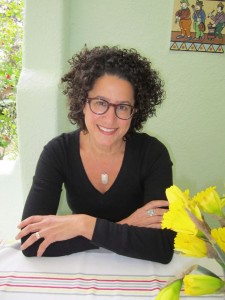
Marla Frazee is the award-winning author and illustrator of many celebrated bestselling books including The Seven Silly Eaters, Stars, The Boss Baby, Roller Coaster, and the Clementine series. Her acclaimed books All the World and A Couple of Boys Have the Best Week Ever received the Caldecott Honor Award. She lives in southern California with her husband and three sons, where she works in a backyard studio under an avocado tree. I’m willing to bet she makes some crazy delicious guacamole.
Nicki Richesin: You knew from a very young age that you wanted to become a children’s book illustrator. It must have felt incredibly gratifying when A Couple of Boys Have the Best Week Ever won the Caldecott Honor Award. How does it feel now looking back on your youth and realizing your single-minded determination and drive has helped you achieve your goal?
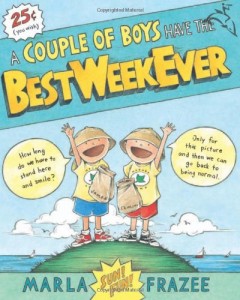 Marla Frazee: You mean aside from making me feel old? Well, I guess I had determination and drive to some extent, but when I compare my growing up years to my children’s growing up years, I honestly feel like I was a slacker! I just loved children’s books, and I loved drawing and reading and writing stuff, and I never stopped loving all of that. I did get very serious in college – I attended Art Center College of Design in Pasadena and the program was so grueling that I hardly retain any memories of that time because I was so sleep-deprived.
Marla Frazee: You mean aside from making me feel old? Well, I guess I had determination and drive to some extent, but when I compare my growing up years to my children’s growing up years, I honestly feel like I was a slacker! I just loved children’s books, and I loved drawing and reading and writing stuff, and I never stopped loving all of that. I did get very serious in college – I attended Art Center College of Design in Pasadena and the program was so grueling that I hardly retain any memories of that time because I was so sleep-deprived.
NR: Your latest book Stars is a gorgeous, magical book about stars and all their practical applications, but it’s also about wishing. Could you tell us a bit about working on this project?
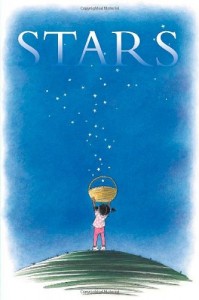 MF: When I first read Mary Lyn Ray’s manuscript, it reminded me of A Hole is to Dig with its seemingly random, childlike sentences and it’s high-wire act of how-is-she-gonna-pull-this-off, oh-my-god-she-just-did! I thought it would be impossible to illustrate, which is why it was so intriguing. I spent many months just thinking about it before I started sketching. It is always fascinating when a book begins to take form, because it goes from being abstract to tangible almost on its own accord. I am often surprised by this, even though I am making it.
MF: When I first read Mary Lyn Ray’s manuscript, it reminded me of A Hole is to Dig with its seemingly random, childlike sentences and it’s high-wire act of how-is-she-gonna-pull-this-off, oh-my-god-she-just-did! I thought it would be impossible to illustrate, which is why it was so intriguing. I spent many months just thinking about it before I started sketching. It is always fascinating when a book begins to take form, because it goes from being abstract to tangible almost on its own accord. I am often surprised by this, even though I am making it.
I work very closely throughout this process with my editor, Allyn Johnston, VP and Publisher of Beach Lane Books, and we discuss the emergent book at every single stage of its development. I depend on that give-and-take very much.
When it was time to paint the finishes for Stars, I had to make an effort to slow myself down. Some of the paintings in Stars were laborious. Hundreds of layers of watercolor, hundreds of snowflakes, hundreds of mossy stars, etc. But it was calming, too, and I usually need to calm down.
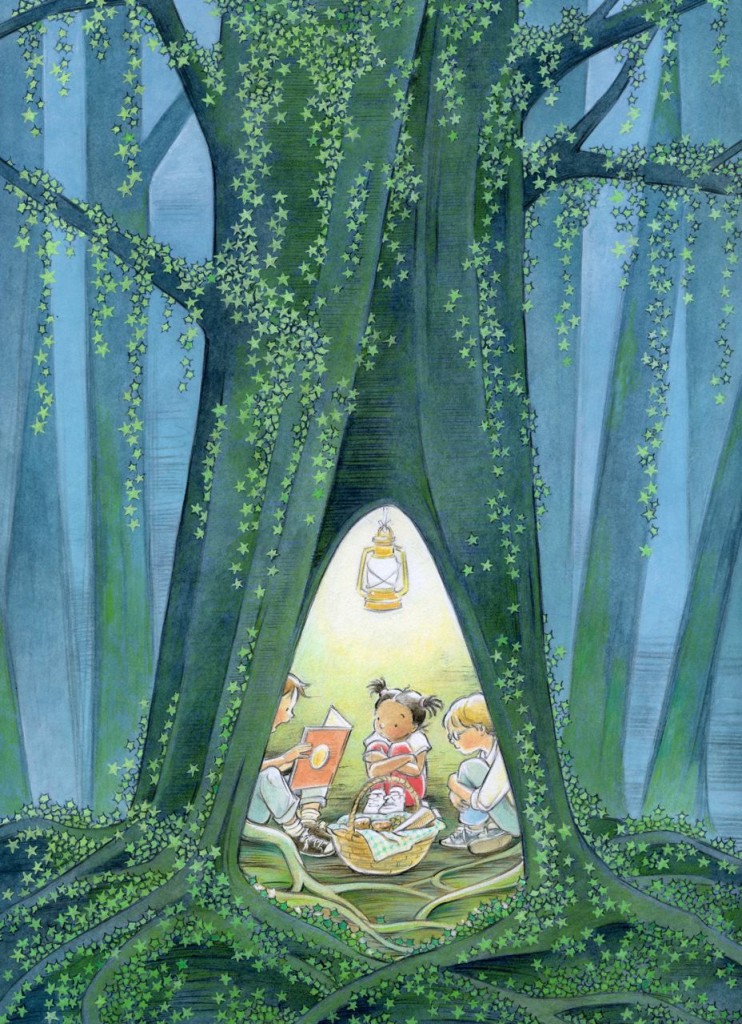
NR: Many of our TCBR readers are aspiring authors and will be encouraged to learn that it took you a long time to break into children’s book publishing. You worked in advertising, educational publishing, and toys and games wherein your artwork was used to communicate messages or teach something, but with children’s books you had to tell a story. You’ve said it took you quite a while to develop this storytelling component in your illustrations. How did you eventually learn to do it?
MF: Yes, it is always helpful to hear a story such as mine and I am more than happy to share it. Even now, I get all prickly when I hear about someone who was offered a contract by the first publisher who saw their work or someone whose first book hit #1 on the NYT bestseller list. I hate those kind of stories. I’m all for delayed gratification.
What I had to do was learn how to tell stories with my pictures. At first I didn’t even know what that meant because I thought I was already doing it. After all these years of drawing stories and trying to teach it, I think it boils down to a pretty simple rule: it takes time to get to know the characters in a book and the world they inhabit. My first sketches are always horrible. Stereotypical. Contrived. Generic. I have to put in the time in order to deepen them and have it all mean something.
NR: In the Clementine books, you wanted your images to hearken back to that era and to look as if they came from that time. You’ve said you’d like your work to appear as “fresh as paint, but to have been around long enough to be a classic.” How do you accomplish this in your illustrations?
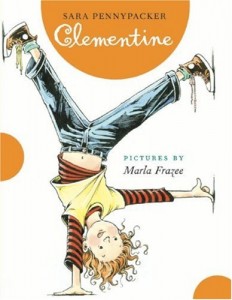 MF: This is a hard question! No one has ever asked me that before.
MF: This is a hard question! No one has ever asked me that before.
I work on the book’s structure before I know what the content of each illustration will be. I think there was a formality to the classic books I admire and I try to riff on (or out-and-out rip off!) some aspect of that with each book. I never just wing it when it comes to structure – and I’m referring here to the pagination and layout of words and pictures within the picture book form. I plan it out, using the rhythm and meaning of the manuscript to dictate what the relationship between words and pictures should be on the page.
NR: When you’re searching for a manuscript to illustrate, you look for a challenging and exciting project- almost like a puzzle you want to understand. You work on a book for about a year. At which point in this process, do you usually feel as if you’ve begun to solve the puzzle?
MF: I definitely feel like it is solved when I have a finished sketch dummy, with text and images in place, page turns figured out, content in the pictures established. Before that, it is all in flux. By the time I start to paint, I’ve got a pretty good handle on what is going on with the book. Then it is a matter of executing it. Sometimes there is a lot of trial and error in the beginning of the painting process before I get a sense of the materials and color palette I want to use. But that’s a different and lesser challenge to me, because by that time, the puzzle of the manuscript is solved.
NR: I loved one of your earlier books called Mrs. Biddlebox about a frustrated crank who decides to bake a cake to lift her mood. I was shocked to learn that the author Linda Smith died the same year this book was published. I wondered whether you knew Linda personally and if her death affected your work on Mrs. Biddlebox?
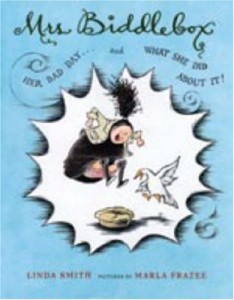 MF: I didn’t get to meet Linda in person, but we spoke on the phone a few times. I called her to see if there was anything she might want to share with me about the book. This is not the way it typically works between authors and illustrators, of course. Usually discussions about the development of a book go through the editor. But I knew that there was a chance Linda would never get to see the finished book and I felt it was important for me to hear what she might want to say. I’m glad I did, because Linda died before I even started the first sketches.
MF: I didn’t get to meet Linda in person, but we spoke on the phone a few times. I called her to see if there was anything she might want to share with me about the book. This is not the way it typically works between authors and illustrators, of course. Usually discussions about the development of a book go through the editor. But I knew that there was a chance Linda would never get to see the finished book and I felt it was important for me to hear what she might want to say. I’m glad I did, because Linda died before I even started the first sketches.
Linda was very professional during our phone conversation and didn’t want to influence my thinking, but she finally shared some of her thoughts. One was that Mrs. Biddlebox should have a pet of some kind, and she suggested a mangy dog or a skinny cat or something. In the initial sketches, I drew Mrs. Biddlebox with a dog and a cat and then a goat and I even tried a raccoon. Finally I settled on the goose. It seemed right. It turns out that Linda used to have a goose named Gabby who would follow her around and bite her through her jeans. Linda’s husband and kids said Linda would have been delighted with Mrs. Biddlebox and her goose. This convinced me that I was taking good care of Linda’s brilliant story, even though she wasn’t alive to see the finished book.
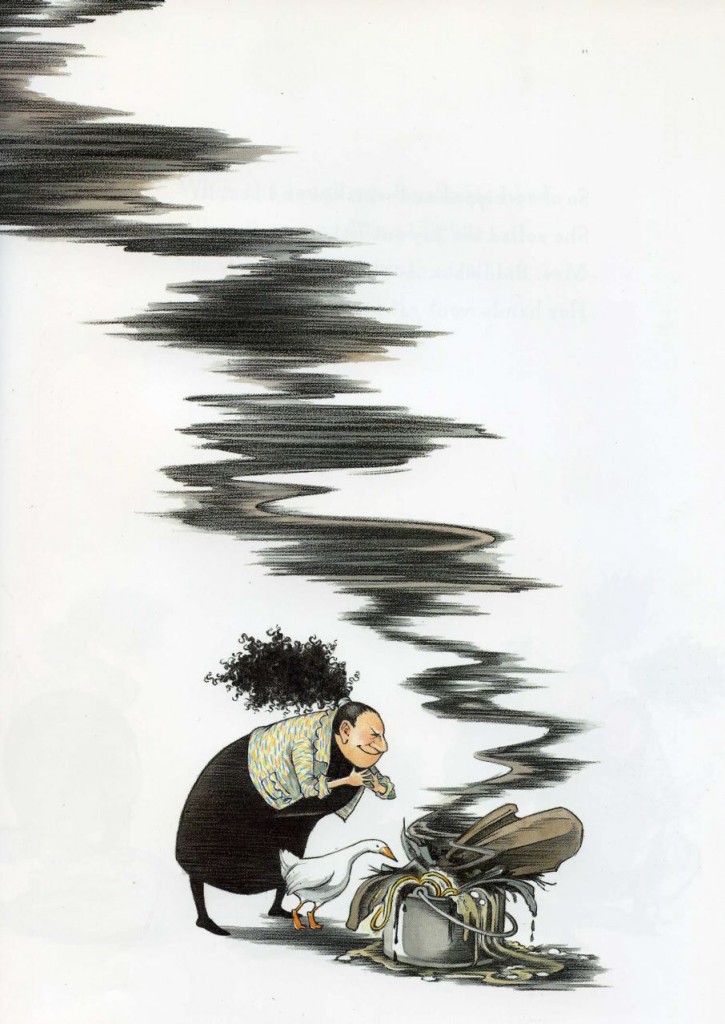
While I illustrated Mrs. Biddlebox, it was often hard to keep from focusing on the sadness of Linda’s death and still honor her wickedly subversive and darkly funny manuscript. It was a balancing act, and maybe because of that it remains one of the most gratifying projects I’ve worked on.
NR: You received the Caldecott Honor Award in 2009 for A Couple of Boys Have the Best Week Ever. You must be grateful that you created this thank-you card/book at your editor’s suggestion. Did it feel different working on a project that sort of documents your son’s adventures rather than working on a fictional project that another author dreamed up?
MF: Absolutely. My editor (whose son is the other boy in the story) and I were often worried that we were engaged in a vanity project, God forbid. Luckily we never thought this at the same moment or we would’ve bagged it. But one of us was always convincing the other that there was something happening with it that was worth our attention. As the book came into being, the story began to take on a life of its own. Basically, A Couple of Boys Have the Best Week Ever is a highly fictionalized account of a very real week. The emotions are all true. The events, well, not so much.
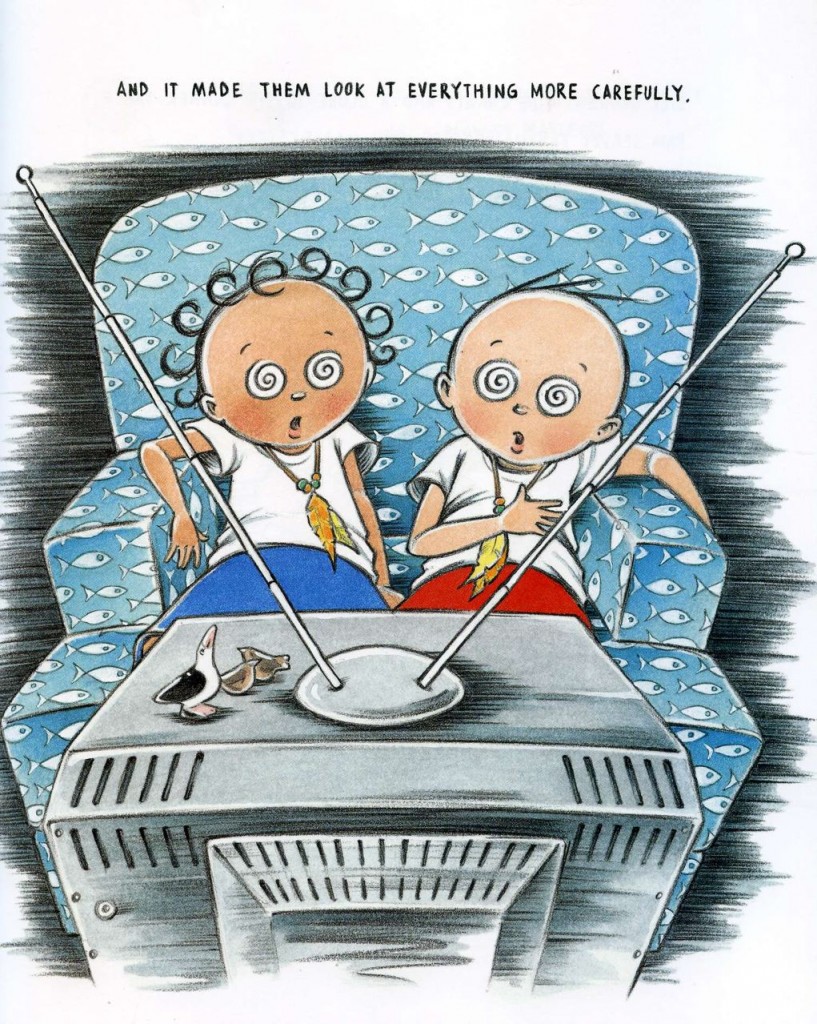
NR: The Seven Silly Eaters is a family favorite in our home. I especially love that Mrs. Peters found the time to play her cello, as if! Could you describe how you first brought the Peters’s family’s adventures to life with your humorous and lively pictures?
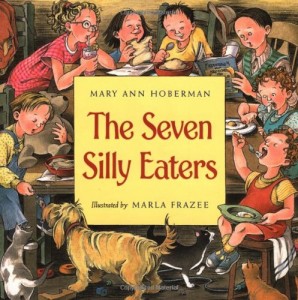 MF: Mary Ann Hoberman is brilliant, of course. But the premise of The Seven Silly Eaters – seven children, all of them with weird eating issues, and a mother who is actually attempting to meet their needs – is almost disturbing. The challenge was how to temper it. Linda Zuckerman, my first editor and the editor of The Seven Silly Eaters, thought the way to do that was to illustrate it with animal characters. But I really wanted it to be a human family. I related very strongly with the mother. The story is really about how she is pulled in all directions by the demands of raising children. What parent among us can’t relate to that?
MF: Mary Ann Hoberman is brilliant, of course. But the premise of The Seven Silly Eaters – seven children, all of them with weird eating issues, and a mother who is actually attempting to meet their needs – is almost disturbing. The challenge was how to temper it. Linda Zuckerman, my first editor and the editor of The Seven Silly Eaters, thought the way to do that was to illustrate it with animal characters. But I really wanted it to be a human family. I related very strongly with the mother. The story is really about how she is pulled in all directions by the demands of raising children. What parent among us can’t relate to that?
I felt the cello was a way of reinforcing the mother’s identity. She is in danger of seeming like a dishrag. I also pared down the world this family exists in. They have no neighbors, no jobs, no car, no phones, no TV. And I put a dad in the book. Mary Ann Hoberman never mentions a dad in the text. Imagine. A woman having a baby every time there’s a page turn? With no dad in the picture? THAT wouldn’t have worked at all! Of course, he’s implied. But it is amazing how when we look at picture books, it is often hard to remember what story is being told in the words and what story is being told in the pictures. And that’s how it should be – a seamless experience of words and pictures telling a larger story together than could be told by either the words or pictures alone. That is what we aim for every time up to bat.
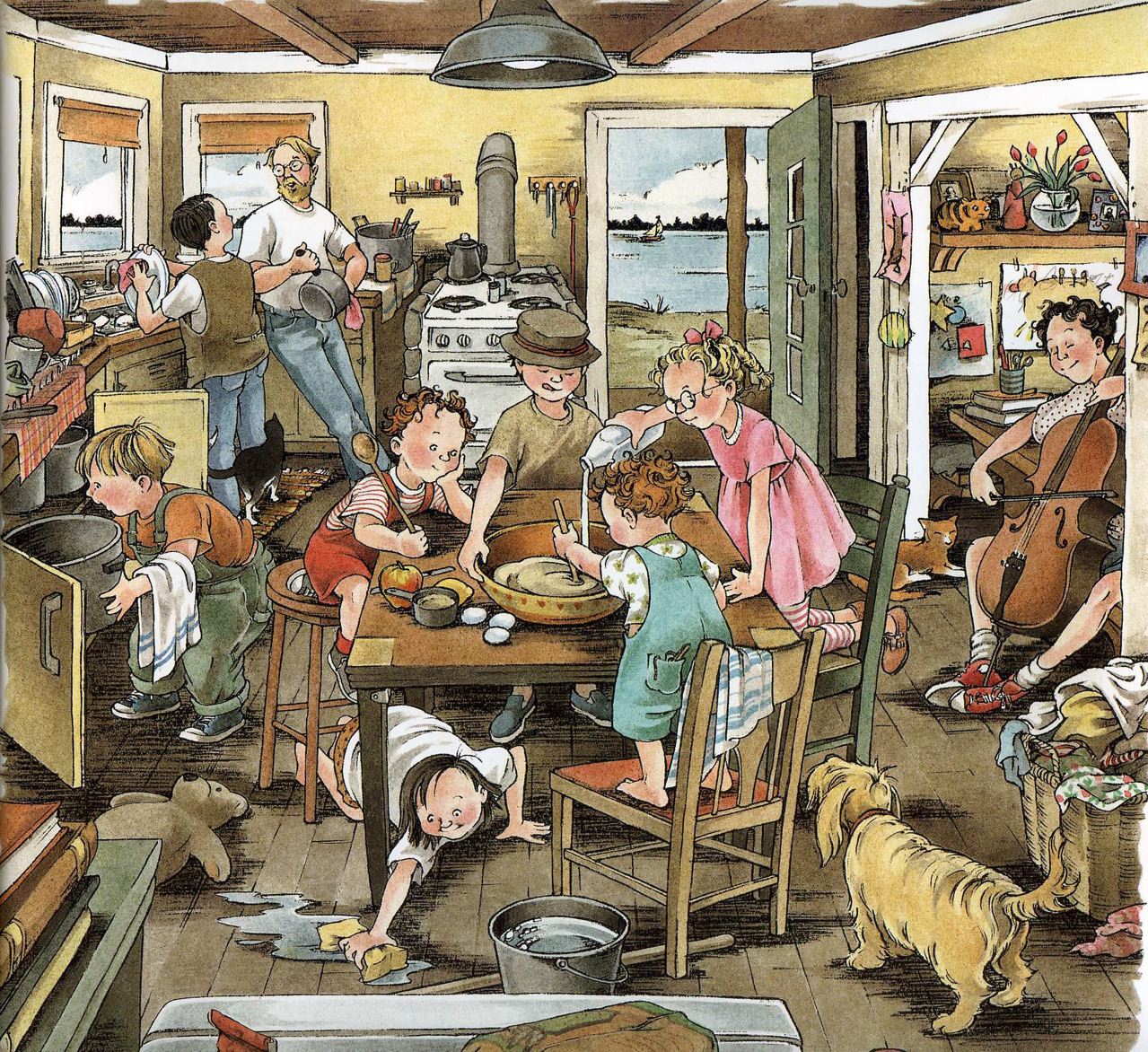
NR: Your Caldecott Honor Award-winning All the World is truly a masterpiece. It somehow subtly balances the stunning splendor of the world (in your illustrations) with the beautiful simplicity of the poetic text (by Liz Garton Scanlon). I’d love to know more about your creative process on this book.
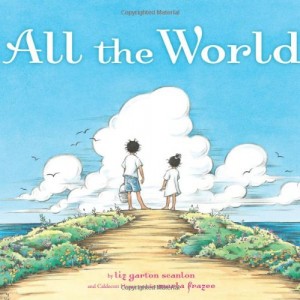
MF: Liz Garton Scanlon’s manuscript is an incredible mix of expansiveness, intimacy, specificity, poetry, emotion, and universal truth. When Allyn sent it to me seconds after she received it, she didn’t wait in a polite way to see if I would be interested. She demanded that I drop what I was doing and start illustrating this thing called All the World right away! This is not the way we usually talk about new projects. There is typically a lot of hemming and hawing and whatnot. But as soon as I read it, I understood where she was coming from.
All the World was daunting. The challenge here, for me, was how to portray “all the world.” An impossible task. When I am confronted with an illustrative problem that seems insurmountable, it is usually that I am thinking too literally and I need to find the emotional truth of whatever it is I’m trying to figure out. In the case of All the World, I decided that no one – certainly not me – has ever experienced “all the world,” but we all have the sense that we belong here. On good days, at least. When I personally feel like I belong to the world, it is because I am with people I love in places I love. So I decided that would be my solution. I set All the World in a place I love – the central coast region of Southern California – and populated it with people and things that I love. I stopped worrying that I wasn’t representing every place, every person, every possible experience. And I hoped that through this personal expression of mine, others would find their own personal meanings as well.
I do believe this to be the over-arching philosophy behind most of the books I’ve fallen in love with over the years. The more personal and heartfelt the story is for the author and/or illustrator of the book, the more universal the emotion that can be gleaned from it. We see this again and again. But it’s hard to remember. It is so easy to go to a place of, “Well, that’s just about me. No one will care about that.” But actually, if it comes from a true place and is spoken from the heart, people do care. A lot.
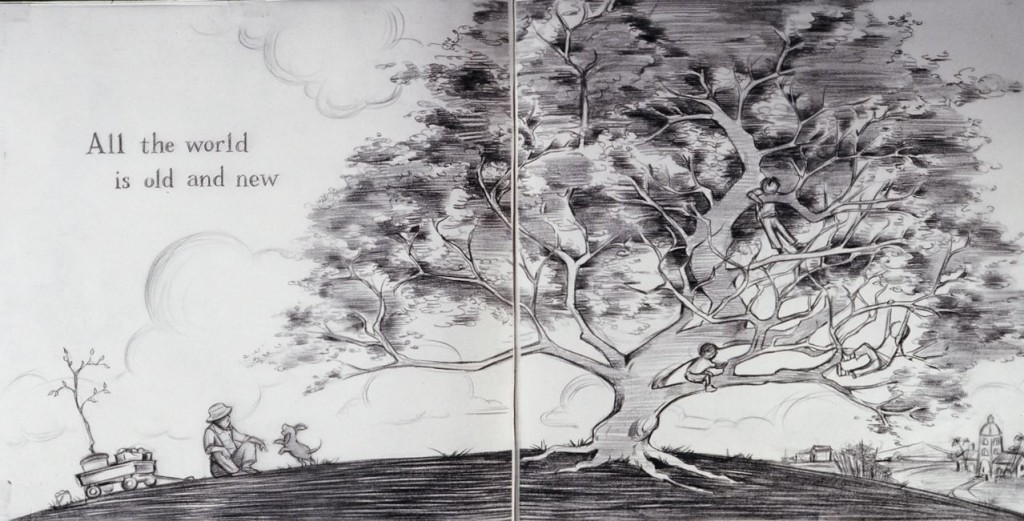
NR: Could you tell us a bit about your upcoming book Boot & Shoe and any other projects you’re working on?
MF: I’ve just put the finishing touches on Boot & Shoe. It’s about two (almost) identical dogs who live in the same house – one spending his days on the front porch and one spending his days on the back porch. This is the perfect arrangement for them, until a squirrel comes along and seriously messes with their heads. The most difficult thing about Boot & Shoe was keeping it light and not bogging it down with extraneous detail. I hope I did that. I think I did, because when I look at the completed book, I wonder why on earth it was so hard to do. It seems like it should’ve been so easy. I think that’s a good sign. I am going to take it that way because otherwise I’m just beating myself up.
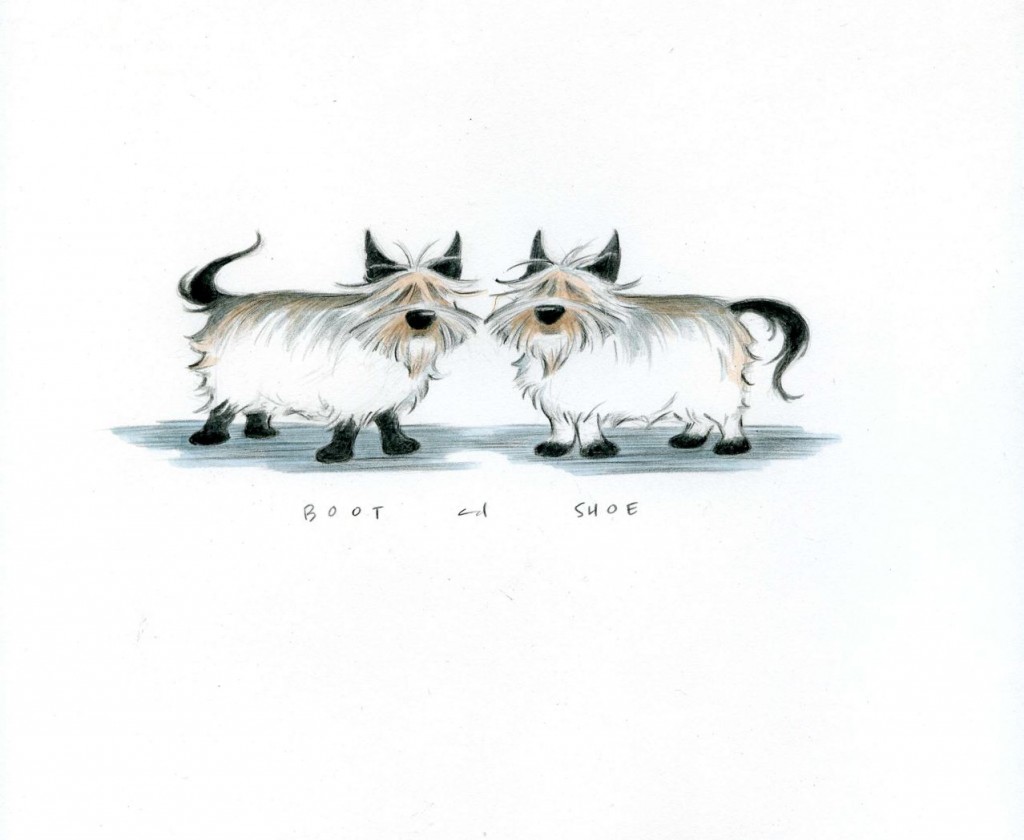
Now I’m beginning work on the 6th book in Sara Pennypacker’s Clementine series. There will be 7 altogether. Sara is bringing this series to a close in the most amazing way.
My next project after that is still under wraps because it involves a book with a text that was published previously, but was not illustrated. I’m very excited about it. And in preparation, I’ve signed up for an oil painting class at Art Center. So I am suddenly a student again, instead of a teacher, working totally out of my comfort zone.
That’s got to be good, right?
Nicki Richesin is the editor of four anthologies,What I Would Tell Her: 28 Devoted Dads on Bringing Up, Holding On To, and Letting Go of Their Daughters; Because I Love Her: 34 Women Writers Reflect on the Mother-Daughter Bond; Crush: 26 Real-Life Tales of First Love; and The May Queen: Women on Life, Work, and Pulling it all Together in your Thirties. Her anthologies have been excerpted and praised in The New York Times, the San Francisco Chronicle, The Boston Globe, Redbook, Parenting, Cosmopolitan, Bust, Salon, Daily Candy, and Babble.
If you love award-winning author and illustrator Marla Frazee as much as we do, you can discover more about her by following The Children’s Book Review’s Marla Frazee tag.

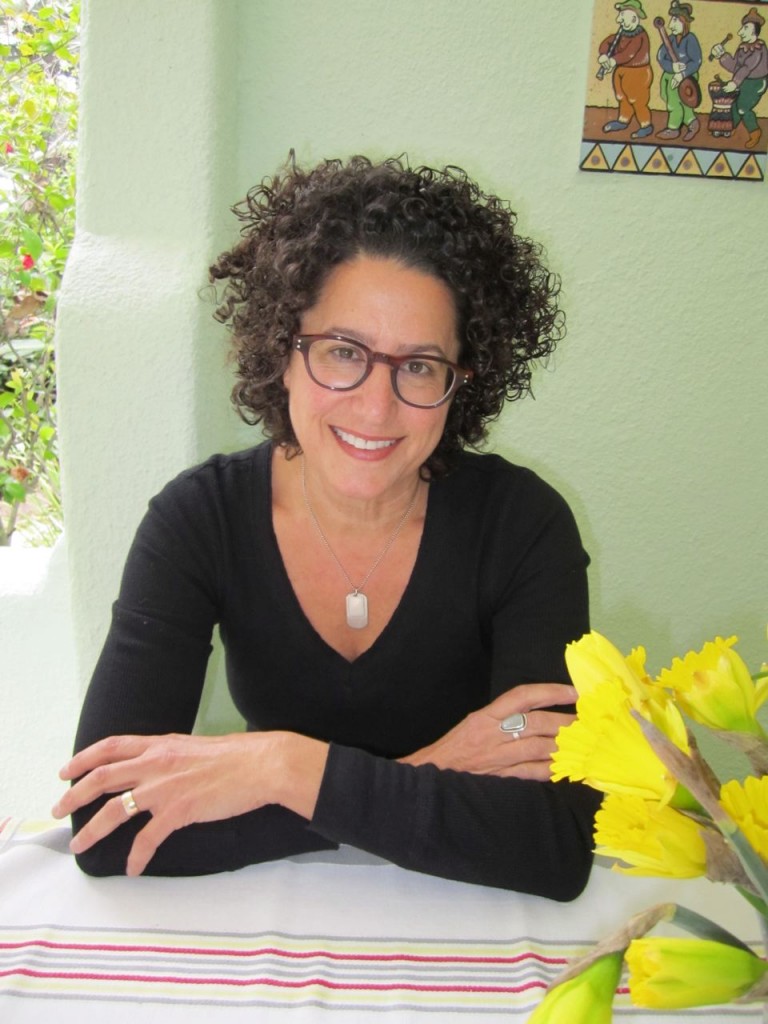
6 Comments
Thank you so much for this generous interview. It seemed so honestly spoken and was so much information so easily assimilated.
I recently wrote and illustrated a children’s picture book called “Oliver the Overachiever”. The experience was wonderful,,,but a study in how very much I didn’t know. In the end I held my breath and jumped with great hope.
Your comment “But actually, if it comes from a true place and if spoken from the heart, people do care. A lot” really was encouraging. Thanks again!
Hi, Nicki, and hey, Marla!
What a wonderful interview. Marla is not only a rare talent, but smart, funny, and wise. So great to listen in on your chat.
Loved the interview! Now I’ll have to chase down all the other titles mentioned. We used Stars last year in our B&N story time, and I loved it so much that I bought it to add to my personal picture book collection. Next week we’ll be closing out our February story time with Boot and Shoe which made me both giggle and sniff Not sure what activity to use with it…a pee tree, maybe?! Perhaps a maze with the dogs chasing that pesky squirrel.
Pingback: The Farmer and the Clown |
Pingback: In Praise of Marla Frazee – Reading With Eli
What a wonderful……………………